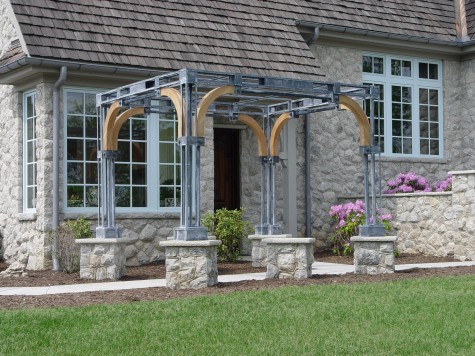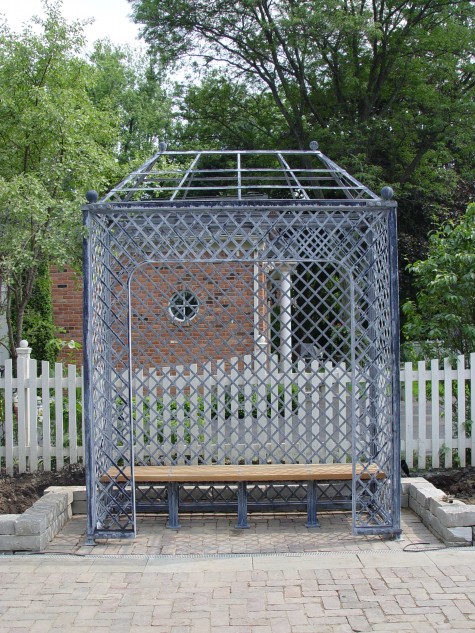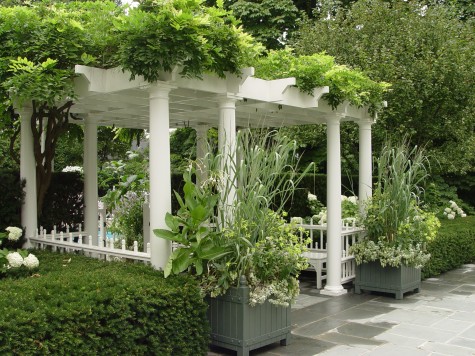
Some years ago an auction of old garden ornament belonging to a well known Dutch antique dealer attracted my attention. Rob happened to be in Europe, shopping for the store in England; it was no problem for him to fly over to Amsterdam and preview the pieces. He fell for a giant 19th century French cast iron fountain and basin. The reserve price was steep, but the piece was compelling and gorgeous. As I could not afford much over the reserve price, I dared not hope. However, it took not three minutes for me to cast the successful bid by phone, and own it. This part was fast and easy; what proved to come was not.
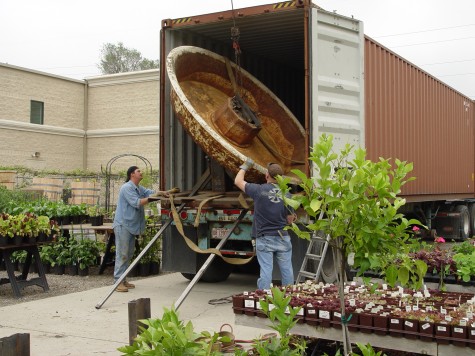 The biggest headache? The basin was too large to sit flat on the floor of the container that would bring it to the US. So, some 6 weeks and plenty of money later, cast iron crates had been welded up for the basin, and fountain. The fountain centerpiece had rusted tight to the basin; it was after all, 130 years old. The centerpiece was painstakingly removed with the help of an acetelyene torch, and then welded to its custom made steel crate.
The biggest headache? The basin was too large to sit flat on the floor of the container that would bring it to the US. So, some 6 weeks and plenty of money later, cast iron crates had been welded up for the basin, and fountain. The fountain centerpiece had rusted tight to the basin; it was after all, 130 years old. The centerpiece was painstakingly removed with the help of an acetelyene torch, and then welded to its custom made steel crate.
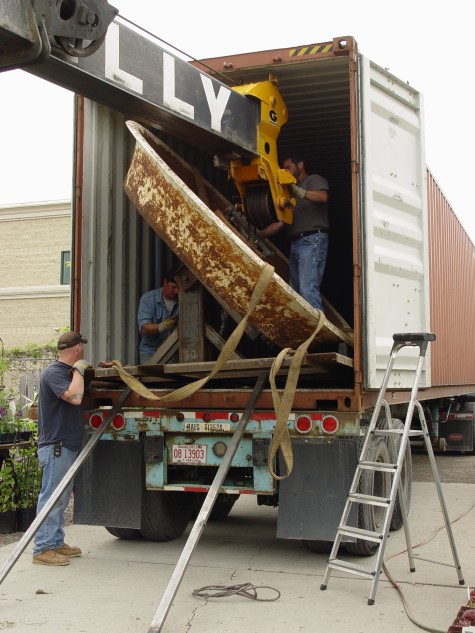
Transport from Holland to Paris was finally arranged; this was not an easy thing to move. Just insuring the move from Holland to France was a big deal. The fountain sat in a warehouse another 4 weeks, awaiting transport to the US. Only days before the arrival, I learned a boom crane would be necessary to get the fountain off the truck-we were dealing with many thousands of pounds of cast iron. I was trying to stave off that “what was I thinking” feeling; it was all mine now, right?
 It was an operation the likes of which I have been involved in rarely; the entire day went to uncrating, and positioning that fountain. The crane people were incredibly professional and focused. At some point during the day I actually looked at what had been the center of so much commotion. It is one the most beautiful large scale fountains I had ever seen. The pattern of the cast iron leaves is as beautiful on the inside as they are on the outside-this a hallmark of very fine ironwork.
It was an operation the likes of which I have been involved in rarely; the entire day went to uncrating, and positioning that fountain. The crane people were incredibly professional and focused. At some point during the day I actually looked at what had been the center of so much commotion. It is one the most beautiful large scale fountains I had ever seen. The pattern of the cast iron leaves is as beautiful on the inside as they are on the outside-this a hallmark of very fine ironwork.
 The torching and unbolted to free the pieces from their steel crates was slow and tedious.
The torching and unbolted to free the pieces from their steel crates was slow and tedious.
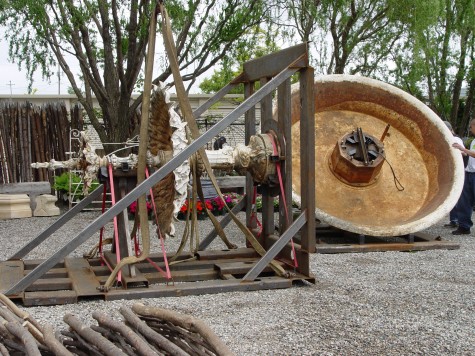 What was I thinking, that I had to have this? I had scared myself, no doubt. But today I would say once in a while something comes along that makes you feel like speaking up. Who wants to spend time contemplating their lost opportunities?
What was I thinking, that I had to have this? I had scared myself, no doubt. But today I would say once in a while something comes along that makes you feel like speaking up. Who wants to spend time contemplating their lost opportunities?
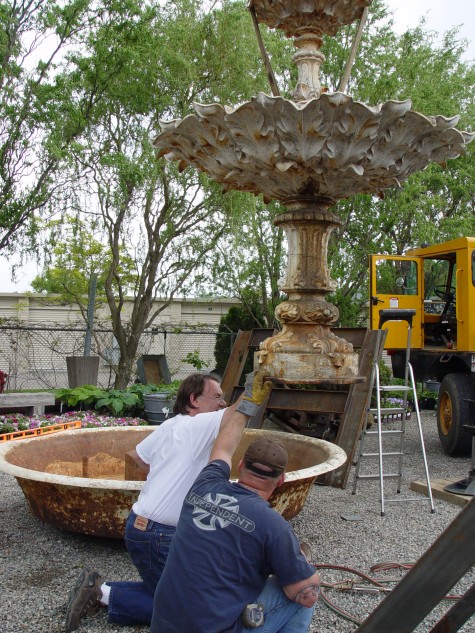 Buck helped out getting the basin set perfectly level, as we knew there would be no moving it once it was placed-except to a new home. The boom crane held the fountain piece aloft until both pieces were perfectly aligned.�
Buck helped out getting the basin set perfectly level, as we knew there would be no moving it once it was placed-except to a new home. The boom crane held the fountain piece aloft until both pieces were perfectly aligned.�
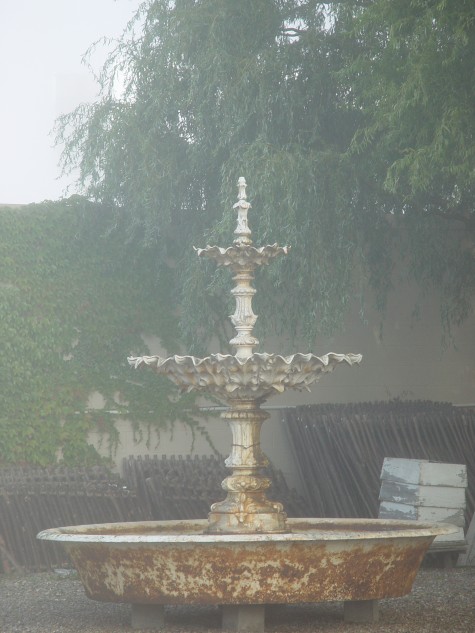
A few days later, on a very foggy morning, it seemed to me that it had been well worth the time and trouble to acquire this fountain. It makes a big statement, where it sits, and it will make even a bigger statement the day it is placed in a garden.
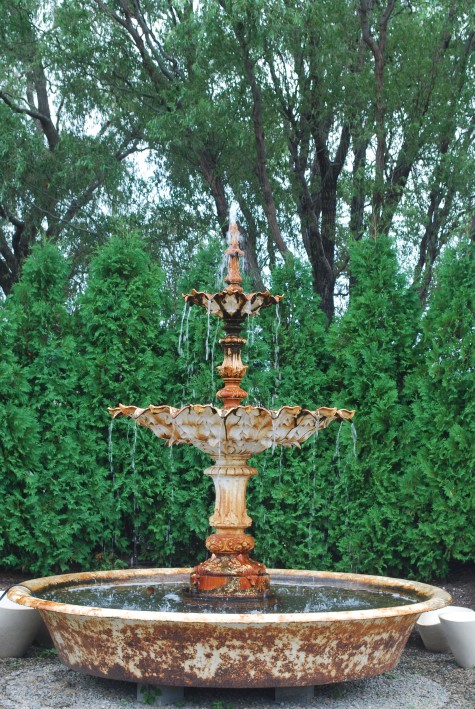 In the meantime, it is my pleasure to look at it every day. In spite of everything it took to get it to me, I know when the day comes, it will be very tough to give it up. Funny, that.
In the meantime, it is my pleasure to look at it every day. In spite of everything it took to get it to me, I know when the day comes, it will be very tough to give it up. Funny, that.
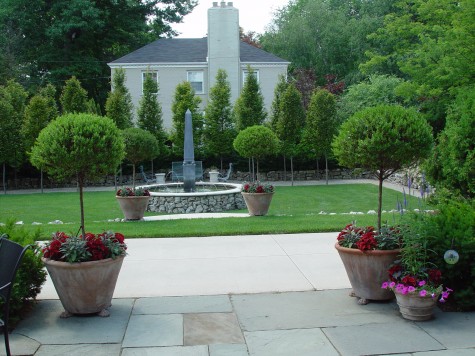
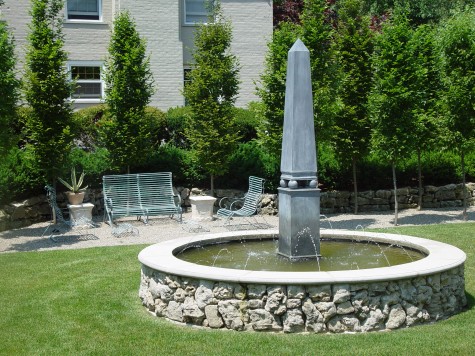
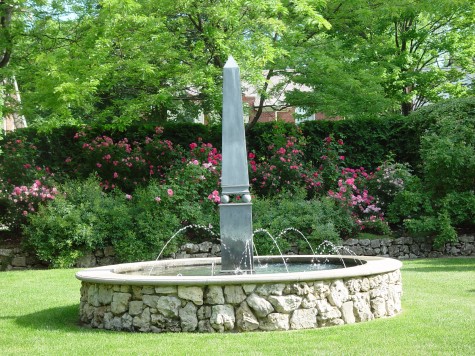


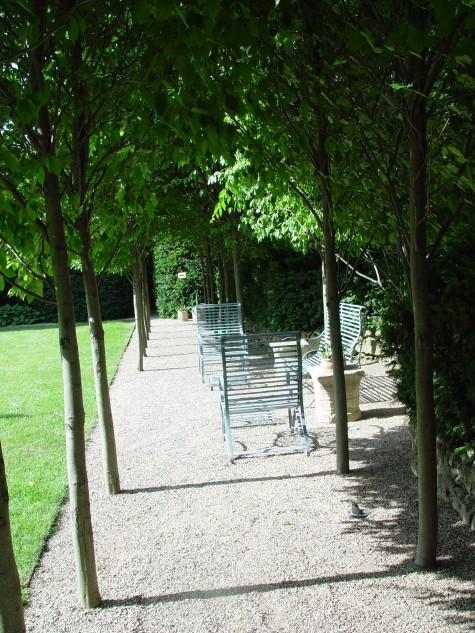

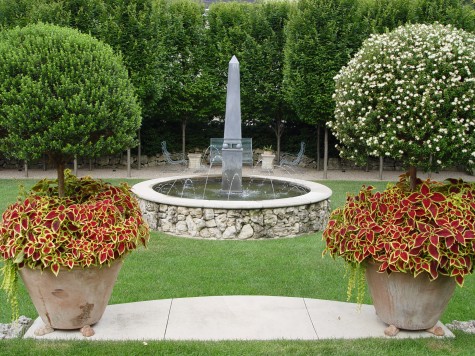
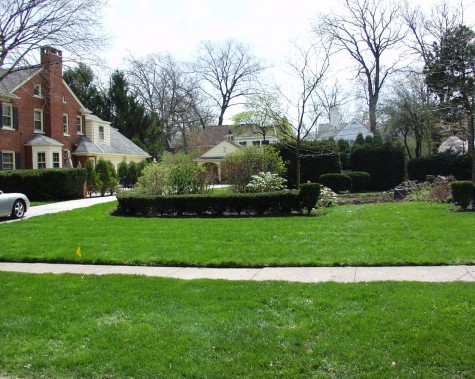



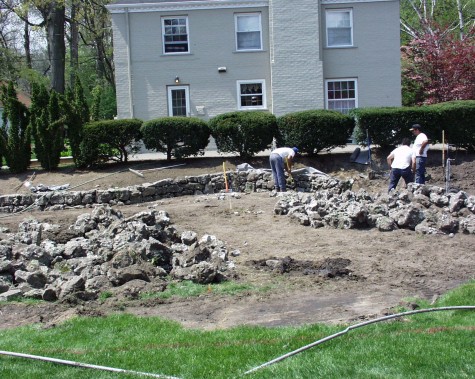
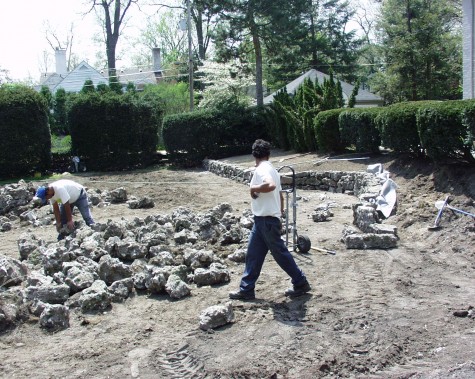

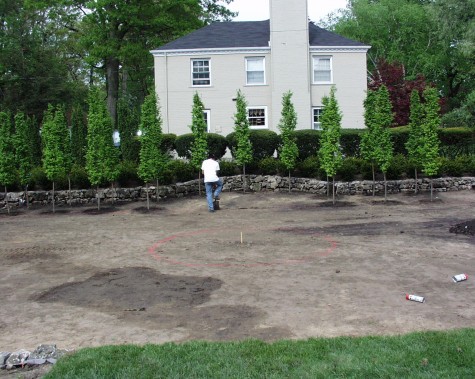


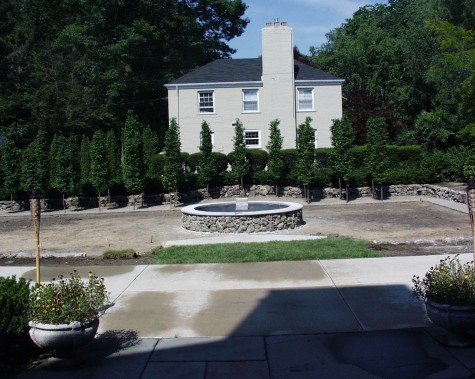
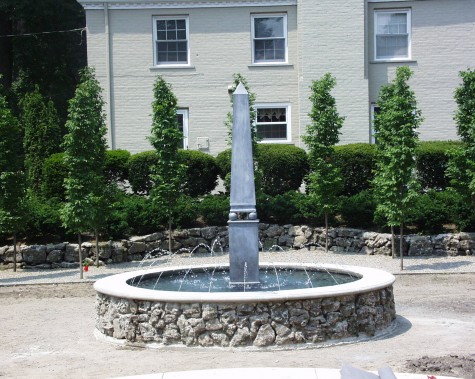
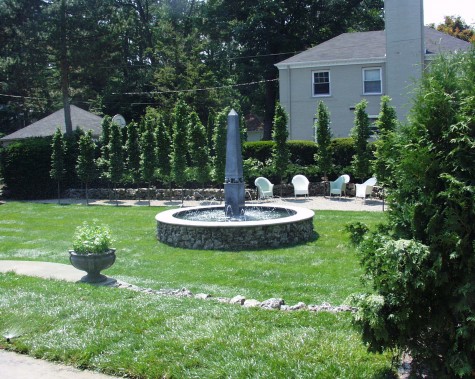
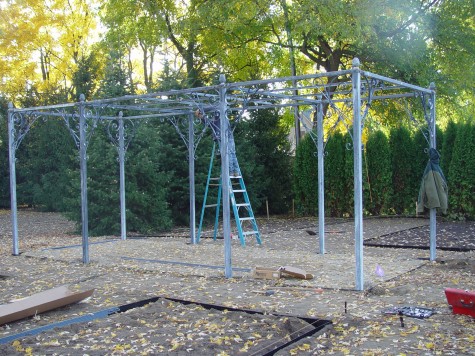
 This pavilion is very much about enclosure. It would be fine with vines, and fine without. The client who purchased this steel “building” had us construct cedar and steel benches for the sides; it became a place to meet in her garden.
This pavilion is very much about enclosure. It would be fine with vines, and fine without. The client who purchased this steel “building” had us construct cedar and steel benches for the sides; it became a place to meet in her garden.


